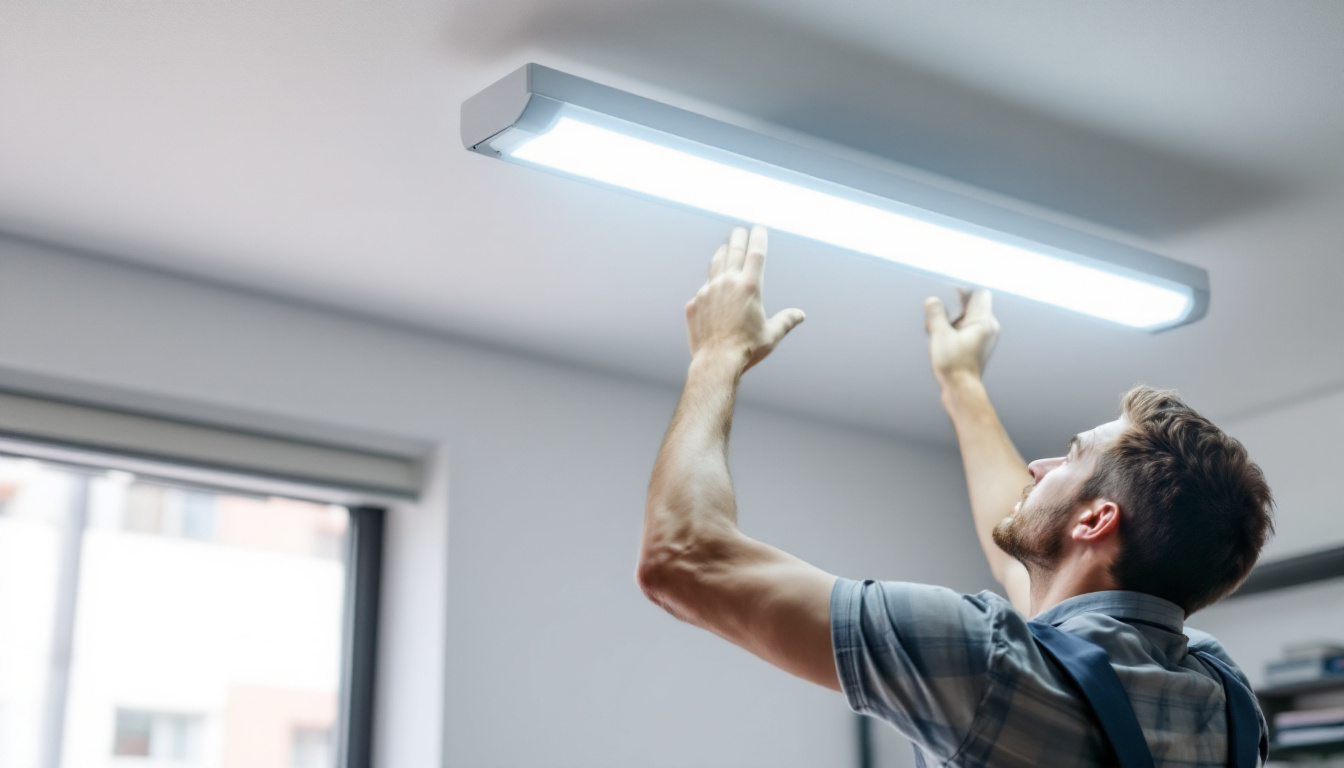
In the world of electrical installations, particularly in lighting, the significance of plugs and receptacles cannot be overstated. These components serve as the lifeline for electrical connections, ensuring that power is delivered safely and efficiently. For lighting contractors, understanding the best practices surrounding plugs and receptacles is crucial for both the quality of work and the safety of installations. This article delves into essential guidelines, practical tips, and common pitfalls to avoid, tailored specifically for lighting contractors.
Plugs and receptacles are integral parts of any electrical system, acting as the interface between the power source and the lighting fixtures. A plug, typically attached to the end of a power cord, fits into a receptacle, which is hardwired into the electrical system. This connection allows for the transfer of electrical energy, enabling lights to function as intended.
In lighting applications, the choice of plugs and receptacles can significantly affect performance. For instance, using the appropriate type of plug can ensure a secure connection, reducing the risk of electrical faults. Moreover, understanding the specifications of different plugs and receptacles can help contractors choose the right components for specific projects, enhancing both safety and efficiency. Additionally, the materials used in the construction of plugs and receptacles can influence their durability and resistance to wear and tear. High-quality materials can withstand environmental factors such as moisture and temperature fluctuations, which is particularly important in outdoor or industrial settings.
There are various types of plugs and receptacles available, each designed for specific applications. Common types include NEMA (National Electrical Manufacturers Association) configurations, which are standardized for safety and compatibility. For lighting contractors, familiarity with these configurations is essential.
For example, NEMA 5-15 is a standard for general-purpose lighting, while NEMA L5-15 is designed for locking connections, preventing accidental disconnection. Understanding these distinctions allows contractors to make informed decisions about which components to use in different scenarios, ensuring that installations meet both functional and safety standards. Furthermore, there are also specialty plugs and receptacles designed for specific environments, such as those rated for wet locations or hazardous materials. These specialized components often feature enhanced sealing and insulation to protect against moisture and chemicals, making them crucial for applications in laboratories, kitchens, or outdoor settings. By selecting the right type of plug and receptacle, contractors can significantly improve the longevity and reliability of their lighting systems, ultimately leading to greater customer satisfaction and reduced maintenance costs.
Selecting the appropriate plugs and receptacles is a critical step in any lighting project. Contractors should consider factors such as the voltage and current ratings, environmental conditions, and the specific requirements of the lighting fixtures being installed. For instance, outdoor lighting may require weather-resistant plugs and receptacles to withstand exposure to the elements. Furthermore, it is important to assess the specific application of the lighting. For example, industrial settings may necessitate heavy-duty components that can endure harsher conditions, while residential projects might prioritize aesthetic designs that blend seamlessly with home decor.
Additionally, it is essential to consider the amperage ratings of the plugs and receptacles. Using components that can handle the load of the lighting fixtures ensures that they operate efficiently and reduces the risk of overheating or electrical failure. Always consult manufacturer specifications and guidelines to ensure compatibility and safety. It is also advisable to keep abreast of advancements in technology; for instance, newer smart plugs and receptacles offer features such as energy monitoring and remote control, which can enhance the functionality of lighting systems significantly.
Proper installation techniques are vital for ensuring the longevity and safety of plugs and receptacles. When installing receptacles, it is crucial to follow local electrical codes and regulations. This may include requirements for grounding, mounting height, and spacing between receptacles. Additionally, understanding the layout of the installation area can help in planning the placement of receptacles to maximize convenience and accessibility, particularly in high-traffic areas or spaces where multiple devices will be used simultaneously.
When connecting plugs, ensure that the wiring is secure and that connections are made according to the manufacturer’s instructions. Loose connections can lead to arcing, which poses a fire hazard. Additionally, using the right tools for installation, such as wire strippers and screwdrivers, can help achieve a clean and professional finish. It is also beneficial to perform a thorough inspection after installation; checking for any signs of wear or damage, and testing the connections with a multimeter can prevent future issues. Regular maintenance checks can further enhance the reliability of the electrical system, ensuring that it remains safe and efficient over time.
Grounding and bonding are essential safety practices in electrical installations. Grounding provides a path for electrical current to safely dissipate in the event of a fault, while bonding ensures that all metal parts of the electrical system are at the same electrical potential, reducing the risk of electric shock.
For lighting contractors, it is crucial to ensure that all plugs and receptacles are properly grounded. This may involve connecting grounding wires to receptacles and ensuring that the grounding system is intact. Regular inspections of grounding connections can help identify potential issues before they become serious hazards. Additionally, understanding local electrical codes and regulations regarding grounding can help contractors maintain compliance and enhance safety measures. It’s also worth noting that different environments may require different grounding techniques; for example, installations in wet or damp locations may necessitate more stringent grounding practices to mitigate risks associated with moisture.
Regular maintenance and inspections of plugs and receptacles are vital for ensuring ongoing safety and performance. Contractors should establish a routine inspection schedule to check for signs of wear, damage, or corrosion. This is particularly important in high-use areas or environments where moisture or dust may be present.
During inspections, look for loose connections, discoloration, or any signs of overheating. If any issues are identified, they should be addressed promptly to prevent further damage or potential hazards. Keeping detailed records of inspections and maintenance can also help contractors stay organized and proactive in their approach to safety. Furthermore, it is beneficial to educate staff and clients about the importance of reporting any unusual electrical behavior, such as flickering lights or tripped circuit breakers, as these can be early warning signs of underlying issues. By fostering a culture of safety awareness, contractors can enhance their overall safety protocols and ensure a more reliable electrical system for all users.
One of the most common mistakes made by lighting contractors is overloading circuits with too many plugs and receptacles. Each circuit has a maximum load capacity, and exceeding this limit can lead to overheating and potential fire hazards. It is essential to calculate the total load on a circuit before adding additional lighting fixtures or components.
Contractors should also be aware of the implications of using multiple power strips or extension cords, as these can further exacerbate the risk of overloading. Instead, consider distributing the load across multiple circuits to ensure safe and efficient operation.
Every plug and receptacle comes with manufacturer guidelines that outline installation procedures, load capacities, and safety precautions. Neglecting these guidelines can lead to improper installations, which may compromise safety and performance. Lighting contractors should always refer to these documents and ensure that all installations adhere to the recommended practices.
Additionally, staying updated on any recalls or safety notices related to specific products can help contractors avoid using potentially hazardous components in their projects.
With the rise of smart home technology, smart plugs and receptacles are becoming increasingly popular in lighting installations. These devices allow for remote control and automation of lighting systems, enhancing convenience and energy efficiency. For lighting contractors, incorporating smart technology into installations can provide added value to clients and differentiate their services in a competitive market.
When working with smart plugs and receptacles, it is essential to understand the compatibility with existing systems and the specific requirements for installation. Proper configuration and testing are crucial to ensure that these devices function as intended and provide the desired benefits to end-users.
As the focus on energy efficiency continues to grow, many manufacturers are developing plugs and receptacles designed to minimize energy waste. These components may feature advanced technologies that help reduce standby power consumption, contributing to lower energy bills for clients.
Lighting contractors should stay informed about these innovations and consider recommending energy-efficient plugs and receptacles to clients. Not only does this align with sustainability goals, but it can also enhance the overall appeal of lighting installations.
In conclusion, understanding the best practices surrounding plugs and receptacles is essential for lighting contractors aiming to deliver high-quality, safe, and efficient installations. By focusing on the selection of appropriate components, adhering to safety standards, and staying informed about industry innovations, contractors can enhance their expertise and reputation in the field.
Regular maintenance, inspections, and a proactive approach to safety will further ensure that installations remain reliable and effective over time. By avoiding common pitfalls and embracing new technologies, lighting contractors can position themselves as leaders in the industry, providing clients with exceptional service and peace of mind.
Ultimately, the commitment to excellence in the realm of plugs and receptacles not only benefits contractors but also contributes to the overall safety and satisfaction of clients, paving the way for successful lighting projects for years to come.
Ready to elevate your lighting installations with the highest quality plugs, receptacles, and lighting products? Look no further than LumenWholesale, where we offer an unbeatable combination of spec-grade materials, wholesale pricing, and the convenience of free shipping on bulk orders. Don’t let inflated markups compromise your project’s budget or quality. Choose LumenWholesale for reliable, high-performance lighting solutions that meet the strictest industry standards. Visit us today and discover how we can enhance your lighting projects with Wholesale Lighting at the Best Value.

Discover essential insights for lighting contractors on selecting and installing post lights outdoors.

Discover how lighting contractors are transforming outdoor spaces with innovative pole lighting solutions.

Discover the essential facts about low voltage LED tape lights that every lighting contractor should know.

Discover how 4-ft fluorescent light fixtures can be a game-changer for lighting contractors.